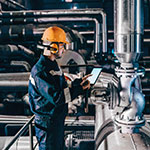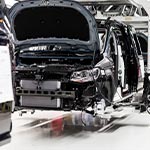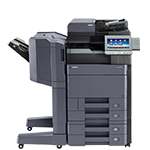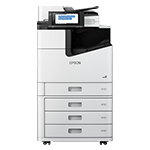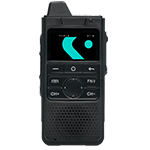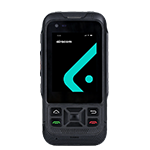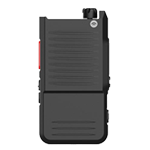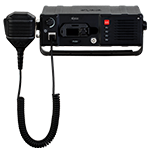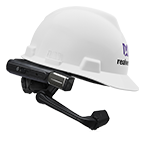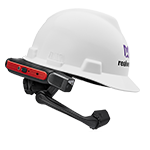What Industries use Intrinsically Safe Devices?
Intrinsically safe devices, a critical safety tool for hazardous areas
Mobile devices are designed for safe operation across some of the world’s most harsh, hostile and hazardous industrial locations.
Intrinsically safe (IS) devices are designed to operate safely in hazardous environments with a risk of explosion. These devices cannot ignite flammable gases, vapours, or dust, even under fault conditions. IS devices are an essential safety tool for many industries, including oil and gas, chemical, mining, pharmaceutical, aerospace, transportation, and utilities.
Hazardous area industries
Industries that use intrinsically safe devices
Understanding ATEX, the European directive for explosive environment safety, is crucial for business leaders. ATEX establishes key standards for equipment in explosion-risk areas, aiding in risk reduction and regulatory compliance. This guide provides a concise overview of ATEX classifications, which are essential for enhancing workplace safety and meeting safety regulations.
Oil and Gas: IS devices are used in both onshore and offshore environments to ensure safe communication and operation of equipment in hazardous areas. This includes drilling rigs, refineries, and pipelines.
Chemical: IS devices are used in chemical processing plants with flammable gases and vapours. These devices help minimise ignition risk, critical in environments where the slightest spark can lead to catastrophic accidents.
Mining: IS devices are used in underground and surface mining operations to ensure safe communication and control of equipment in potentially explosive atmospheres. This is particularly important in underground mines where the risk of methane gas explosions is a significant concern.
Pharmaceutical: IS devices are used in pharmaceutical manufacturing facilities where flammable liquids, vapours, and gases are present. These devices allow workers to communicate and collaborate in real time without the risk of sparking or igniting flammable substances.
Aerospace: IS devices are used in aerospace manufacturing and maintenance operations where flammable gases, vapours, and dust are present. These devices help prevent sparks and other ignition sources that could lead to explosions or fires.
Transportation: IS devices are used in transportation industries, such as rail and aviation, where fuel or other flammable materials are present. These devices help to prevent the risk of ignition in the presence of flammable substances, which is critical for ensuring the safety of workers and passengers.
Utilities: IS devices are used in power plants, water treatment facilities, and other utilities where hazardous materials and gases are present. These devices are designed to prevent the risk of ignition in the presence of flammable materials and gases, which is essential for maintaining a safe working environment.
ATEX Equipment benefits
Benefits of using approved intrinsically safe devices
There are many benefits to using intrinsically safe devices in hazardous environments. These benefits include:
Reduced risk of explosion: IS devices are incapable of igniting flammable gases, vapours, or dust, even under fault conditions. This can help to prevent explosions and fires, which can cause serious injuries or death.
Improved safety: IS devices can help to improve the safety of workers and equipment in hazardous environments. This can lead to reduced accidents and downtime.
Compliance with regulations: In many industries, there are regulations that require the use of IS devices in hazardous environments. Using IS devices can help businesses to comply with these regulations and avoid fines or penalties.
Seleting the right IS device
Choosing the right ex-certified or intrinsically safe mobile device
When choosing an IS device, it is important to consider the following factors:
The type of hazardous environment: There are different types of hazardous environments, each with its own set of risks. It is essential to choose an IS device certified for the type of hazardous environment in which it will be used.
The features of the device: IS devices are available with a wide range of features. It is important to choose a device that has the features that you need, such as a built-in camera or flashlight.
The cost of the device: IS devices can range in price from a few hundred dollars to several thousand dollars. It is essential to choose a device that is affordable for your budget.
Streamlining Operations with UC
Conclusion and additional resource information
Intrinsically safe devices are an essential safety tool for industries with a risk of explosion. These devices can help to prevent accidents, injuries, and deaths. When choosing an IS device, it is important to consider the type of hazardous environment, the features of the device, and the cost of the device.
Airacom Secure Voice & Data
Airacom your hazardous area UC partner for industrial voice & data services
Airacom is a leading provider of intrinsically safe mobile devices and communication solutions for businesses that operate in hazardous environments. Airacom’s devices are designed to meet the highest safety standards and regulatory requirements, ensuring that workers can communicate safely and effectively in potentially explosive environments.
We offer a wide range of intrinsically safe devices, including rugged smartphones and tablets, as well as a variety of communication solutions, including push-to-talk (PTT) over cellular, satellite, and Wi-Fi networks, as well as unified communications solutions that enable workers to communicate through voice, video, and data.
Explore our range of intrinsically safe smartphones
Explore our range of Android ATEX smartphones, tailored for high-risk environments, including Zone 1 and Zone 2. These devices are designed for safety and performance, meeting specific hazardous location needs.



